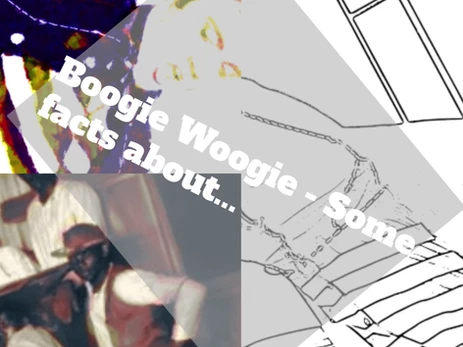Uncategorized
The Boogie-Woogie
The Boogie Woogie is a musical genre that comes from the blues and jazz.
The term comes from the African Diaspora influence of playing in a percussive rhythmic style. The rhythm pattern follows a basic structure of eighth notes played in quadruple time. Most of the time, these notes are varied.
This genre intends to tell a story. Historically, it originated in the 1930s when the African American artists began to spread their rich heritage of storytelling orally. This style has been influencing other musical genres such as rock and roll.
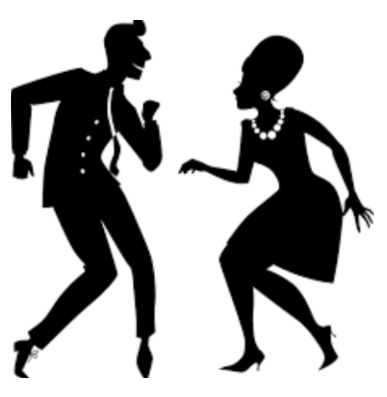
Boogie Woogie for beginners: The history
This musical genre comes from the blues.
The blues music consisted of storytelling through songs. These songs were narrative ballads that came from the African Diaspora movement. The African people were traded as slaves in the United States and brought their culture into Western American society. These were work songs developed further into Spirituals, Godspell, Boogie Woogie and Rock and Roll.
The Boogie Woogie’s main characteristics are:
- The call and response pattern
- Polyrhythm
- Vocal expressions: Screams and Cries
- Rests and Space
- Typical harmonic progression and bass figure
Let’s now analyze one by one these main characteristics.
The Call and Response Pattern
The call and response is a composition technique in which the instruments “talk” among them and create an effect of having a conversation. The effect works through the use of rests, rhythm and very well-phrased melodies. As one melody ends in a half or broken cadence, the following melodic line closes the phrase in a perfect cadence.
Two distinct phrases make the structure of this pattern, the first phrase reflects a short theme and the second phrase directly responds to it.
This method is what musicians and composers call now the “Antecedent” and “Consequent” phrase present within the musical period.
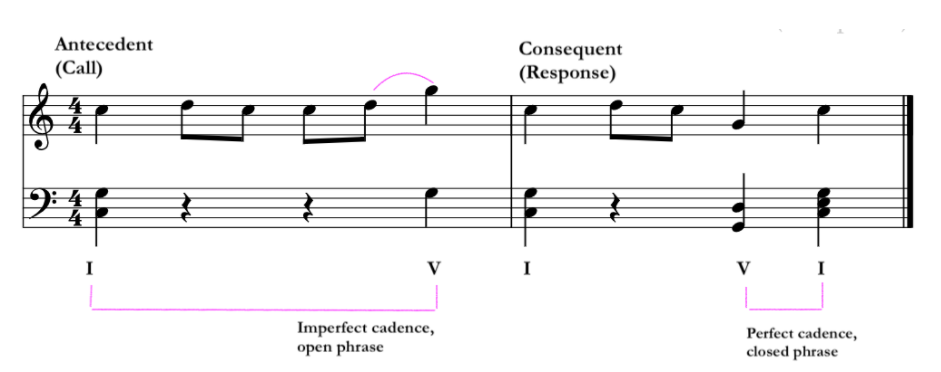
The example above shows a short melody in C major. The first phrase ends open and with a higher note to accentuate the question sound. The second phrase closes the melody in a perfect cadence.
Many of us musicians, we have heard this musical effect. This is present in modern genres as well, as this format gives shape and direction to any musical piece.
Polyrhythm
Polyrhythm is another music technique in which rhythm and beat patterns are given more importance than sound. The origin of polyrhythm comes from the African Diaspora, with time it has been used throughout other genres of music such as baroque, classical, jazz and rock.
As opposed to classical western music, in which fugues and sonatas contain a melodic theme, in this genre, the theme is rhythmic.
It is a simultaneous combination of opposite rhythms that contrast and create a palette of colors and exciting textures. For example, there can be a drummer playing in triple time while another percussionist plays a pattern in quadruple time.
This is known as well as “cross rhythm”.
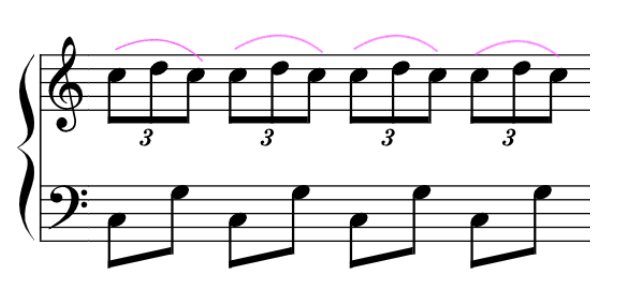
In multiple cases, polyrhythm is envisioned by ratio. Two different rhythm structures are playing simultaneously; therefore, musicians perceive them as ratios. The example above would be a 3:2 ratio pattern. There are many combinations possible such as the 4:3, 2:3, 7:4 5:6…
The American composer Charles Ives used this technique a lot. This technique is also prevalent to Jazz and Afro American Music.
Vocal Expressions: Screams and Cries
The vocal expression in music comes from the popular Hausa music, in which this African style was compromised by asking and answering questions musically. It is a response mechanism of the storytelling method through music. Morals and values were taught by the elder members of the family or tribe.
In many cases, the tribal ensemble was divided into two groups. One group played the music and sang the “questions” in musical character. The audience would respond either by imitating the melodic pattern or by screaming or shouting.
Screaming and shouts is often related to ancient calls to divinity, prosperity and unity within a family. Therefore this African mechanism of response has been passed to later generations, going through the African Diaspora and finally ending in the Boogie Woogie, Jazz and even in Rock and Roll.

Rests and Space
Rests are used to give space and shape well the musical phrases. It helps as well in leaving a blank space for the “answering” section of the performance. While one part of the group sings their question phrases, they would leave a rest on their staff to let the other group answer.
The example below shows how it would look on a score.
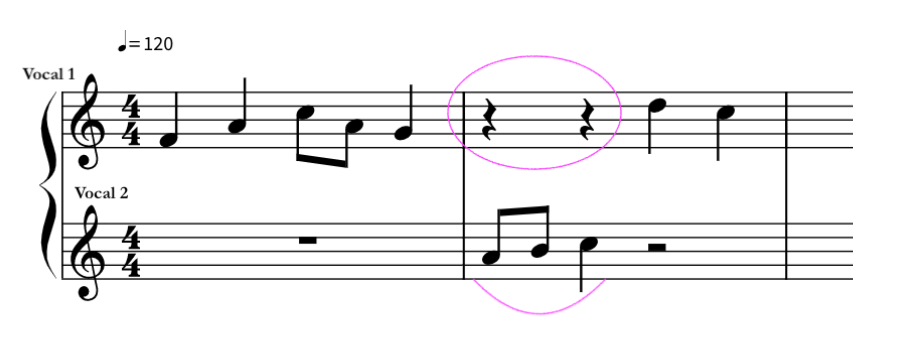
Common Harmonic Progression and Bass figure
The boogie-woogie is known as a percussive variation of the blues. It has a very distinctive sound in the bass line and the accompaniment. The harmony is similar to the blues harmony; the chord progression is I7 – IV7 – V7 or I7 – IV7 – I7. You could try to use the II V I progression too, it will add to the genre some “modern” sound because it is more related to the sound of a jazz Broadway alike style.
The right-hand plays syncopated melodies, also known as “riffs”, while the left hand performs a structure of repeated notes, known as “ostinato”. These eight notes are interleaved in a pattern that resembles a guitar or banjo picking.
Within this “ostinato”, the bass line develops a unique and very identifiable sound.

The example above shows how the bassline typically moves.
Conclusion
To conclude, the Boogie Woogie is a musical genre that invokes dance and tells a story through music. By using these layers discussed before, the songs develop a very distinct and embellished character.
This genre is defined by a very deep cultural and historical background since it is linked to the African Tribal culture. Many of the stories told were melancholic and nostalgic as it expresses the harsh feeling of being ripped out of oneself’s culture and forced into slavery.
Despite the active and happy – looking aspect of the boogie woogie, in reality it is a style used as a cry for freedom and justice.
Author: Ana Ortiz Wienken

